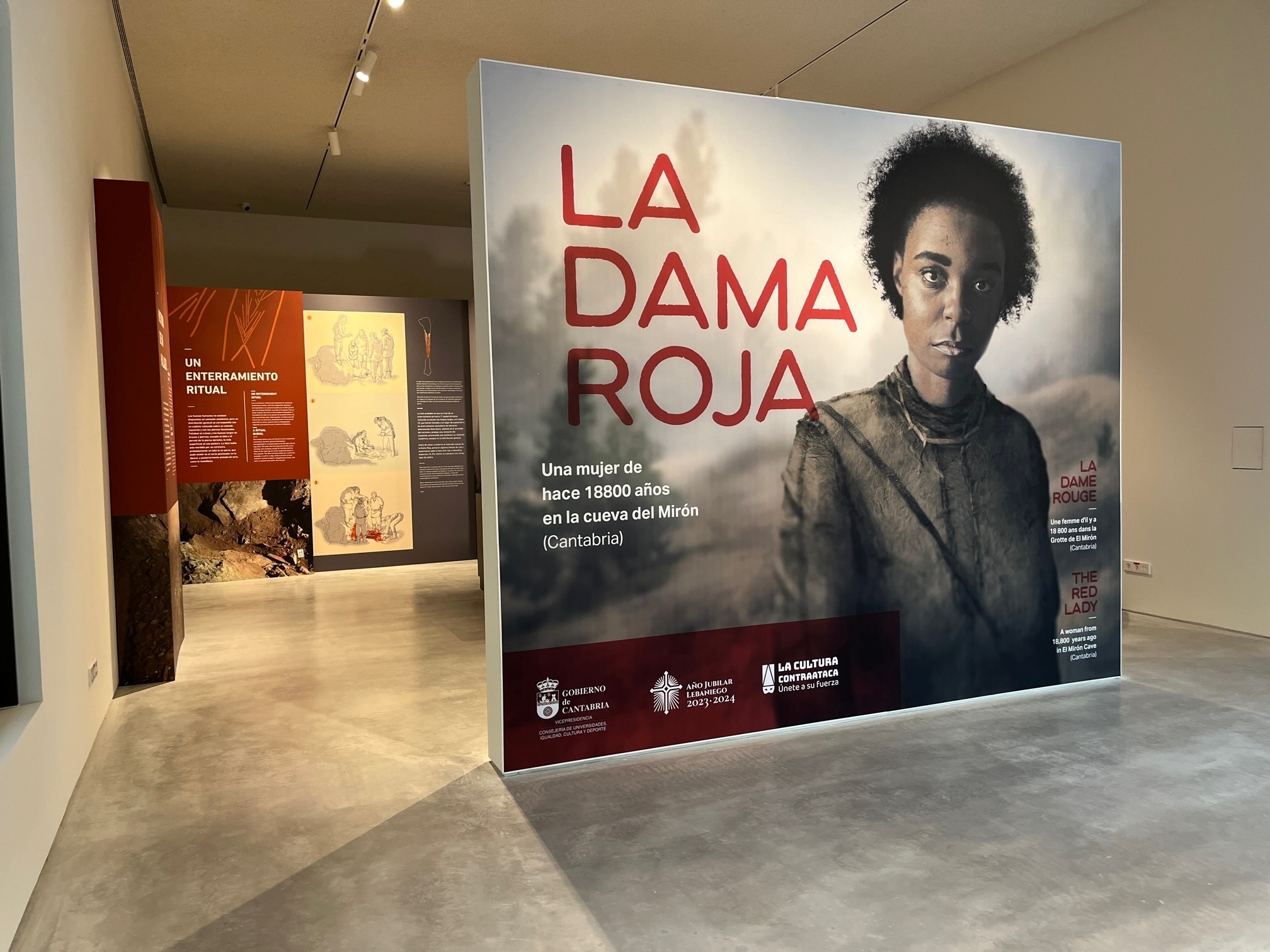Inaugural Exhibit and New Article in Nature feature the Red Lady of El Miron Cave (Spain)
Departmental News
Posted: Mar 03, 2023 - 12:00pm

The inaugural exhibit of the new Centro de Arte Rupestre de Cantabria in Puente Viesgo (Cantabria) features the Red Lady of El Miron Cave. Together with his Spanish colleague/project co-director Professor Manuel Gonzalez Morales (Universidad de Cantabria), Leslie Spier Distinguished Professor Emeritus Lawrence Straus has been (remotely) working as co-curator of this exhibit. It contextualizes and displays the skeleton of the Red Lady in public for the first time since it was excavated it in 2010-13 by Drs. Gonzalez Morales and Straus. The El Miron Cave Red Lady DNA was obtained and analyzed by Svante Paabo (Max Planck Institute, Leipzing) who recently won the Nobel Prize for his development of the genomic study of ancient hominins.The exhibit is entitled La Dama Roja: Una Mujer de hace 18,800 Años en la Cueva del Mirón (Cantabria).
The exhibit opening corresponds with the publication of a long-anticipated, major article Palaeogenomics of Upper Palaeolithic to Neolithic European Hunter-Gatherers by Cosimo Posth, Johannes Krause and a huge list of collaborating paleo-geneticists and archeologists (including Straus, Gonzalez Morales and UNM Alumn (2013) Dr. Vitale Sparacello) in Nature. The new article greatly expands on the seminal 2016 Nature article entitled The Genetic History of Ice Age Europe by Q. Fu et al. As in the latter article, the DNA of the Lower Magdalenian-age El Miron Red Lady plays a key role, as it does in the new article. In addition, Dr. Straus supplied human remains from La Riera Cave in neighboring Asturias Province which Geoffrey Clark (ASU) and Straus dug in 1976-79. These remains provided for this study the only DNA securely dated to the Solutrean period, which took place during the critical Last Glacial Maximum (LGM) climatic crisis, 24,000-21,000 years ago.
This data continues to validate the hypothesis that Straus and Michael Jochim (UCSB) separately put forth over 30 years ago that European humans had survived the LGM crisis in refugia in SW Europe (S. France and Iberia) and had recolonized northern Europe from there during the Magdalenian—the time of the El Miron Red Lady. The La Riera human DNA is that of humans who had once lived throughout Western Europe before the crisis and whose range had retreated southward. There was an influx of genes from northern Italy at some point at the end of the LGM crisis as reflected in the El Miron Red Lady, whose genetic makeup is a combination of the Western European Solutrean and Italian genes. The study has attracted media attention in such publications as Science and the New York Times.
Nature: Ancient Genomes Show How Humans Escaped Europes Deep Freeze
Nature: The Genomic History of Ice Age Europeans (Ludovic Orlando)
UNM News: Large-Scale Genomic Analysis Documents Migrations of Ice Age Hunter-Gatherers
